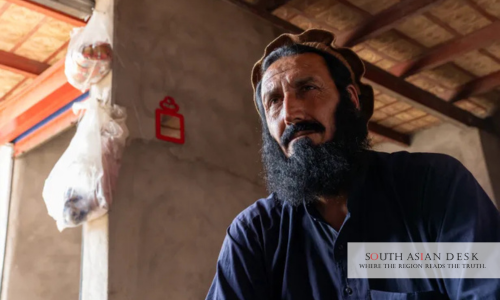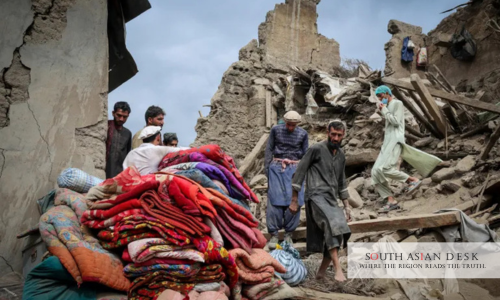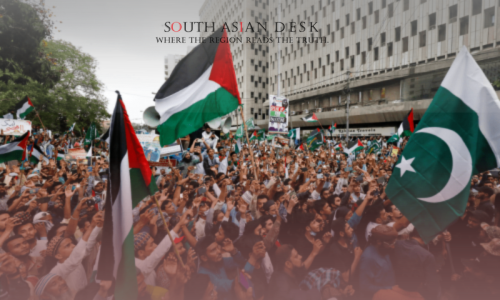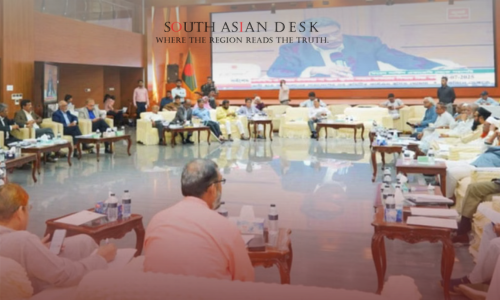Thousands of Afghan returnees, already displaced by deportations, now sift through rubble in eastern Afghanistan, questioning if home can ever mean safety after a deadly quake claimed over 2,000 lives determined in earthquake aftermath.
Afghan returnees in Kunar province are rebuilding shattered lives following a 6.0-magnitude earthquake on Saturday, August 31, 2025, that killed 2,164 people, injured 3,428, and destroyed 7,154 homes across eastern Afghanistan; forced returns from Pakistan and Iran since 2023 left 376,598 in vulnerable conditions, exacerbating the crisis amid limited aid.
The earthquake has intensified Afghanistan’s humanitarian challenges, straining resources in a nation hosting over four million Afghan returnees since September 2023, with more than two million arriving in 2025 alone. This disaster underscores broader South Asian instability, where cross-border displacements from Pakistan and Iran compound natural calamities, potentially triggering regional migration pressures and aid shortfalls.
Afghan Returnees Bear Brunt of Earthquake Aftermath

In the Diwa Gul valley of Kunar province, villages such as Wadir, Noorgal, and Barabat lie in ruins, with the earthquake’s tremors toppling fragile structures built by recent Afghan returnees. The International Organization for Migration (IOM) reports that 376,598 returnees resided in highly vulnerable conditions in the affected districts of Kunar, Nangarhar, and Laghman prior to the disaster. Many had returned from Pakistan and Iran under duress, only to face this second catastrophe.
Nawab Din, a 55-year-old farmer deported from Pakistan, described the devastation: “We are living in tent camps now. Our houses were old, and none were left standing … They were all destroyed by big boulders falling from the mountain during the earthquake.” Din, who fled Afghanistan years earlier after refusing to join the Islamic State of Iraq and the Levant (ISIL), added, “We lost everything we have worked for in Pakistan, and now we lost everything here.” His words capture the double blow endured by countless Afghan returnees, who arrived penniless and now confront total ruin.
Similarly, Sadat Khan, 58, who returned from Pakistan last year, struggles with health issues and unemployment. “I was poor in Pakistan as well. I was the only one working and my entire family was depending on me. We don’t know where the next meal will come from. There is no work here. And I have problems with my lungs. I have trouble breathing if I do more effort,” Khan said. He sought shelter from local authorities but received no tent, forcing his family into temporary accommodation. Such accounts highlight how the earthquake has amplified pre-existing vulnerabilities among Afghan returnees, many of whom lack land or stable housing.
Personal Toll on Afghan Returnees
The quake’s epicentre struck remote areas where Afghan returnees had resettled, often in substandard dwellings. Satellite imagery from September 2, 2025, confirmed widespread structural damage across multiple districts in Nangarhar province alone. Preliminary assessments indicate that entire communities of deportees, who form a significant portion of the local population, were left homeless. The United Nations Children’s Fund (UNICEF) warned on Monday, September 12, 2025, that Afghanistan continues to reel from the 6.0-magnitude event, with children among the most affected.
Kunar’s Governor, Mawlawi Qudratullah, announced efforts to construct a new town with 382 residential plots in Khas Kunar district, specifically targeting Afghan returnees without land or homes. According to the Ministry of Refugees and Repatriates, this initiative aims to provide permanent housing separate from immediate earthquake recovery. However, implementation timelines remain unclear, leaving many Afghan returnees in limbo.
Aid Efforts Intensify Amid Earthquake Crisis
International organisations have mobilised swiftly, though challenges persist. The IOM launched a flash appeal on Monday, September 9, 2025, seeking USD 168 million to address urgent and medium-term needs for earthquake-affected populations, including Afghan returnees. Joint field observations by IOM, the World Food Programme (WFP), and the Office for the Coordination of Humanitarian Affairs (OCHA) on Friday, September 6, 2025, revealed rising community tensions due to widespread destruction.
Islamic Relief established a field hospital in the Diwa Gul valley, where Dr Farida Safi, a nutritionist, has treated malnourished children. “We are addressing food deficiencies among the affected people,” she noted, underscoring the compounded malnutrition risks for Afghan returnees’ families. The United Nations High Commissioner for Refugees (UNHCR) echoed concerns on Wednesday, September 12, 2025, reporting that thousands of Afghans are returning under adverse circumstances to earthquake-hit areas, with response funds running dry.
Afghanistan’s de facto authorities, led by the Taliban, initially reported 800 deaths and 2,800 injuries on Tuesday, September 2, 2025, later revising the toll to 2,205. The Taliban government has urged international assistance, calling for aid to support recovery efforts in the quake-stricken regions. Yet, restrictions on female aid workers have forced the UN to close some centres for Afghan returnees, complicating distributions.
Challenges in Delivering Aid to Afghan Returnees
Logistical hurdles, including damaged infrastructure and remote terrain, have slowed relief. Rescuers often arrive on foot, as reported by the United Nations on Wednesday, September 3, 2025, with survivors requiring everything from shelter to medical care. Aid agencies, including the IOM, emphasise the need for operational hubs and basecamp facilities like latrines and water points to support earthquake-displaced Afghan returnees.
Background
Afghan returnees have surged since the Taliban’s 2021 takeover, with deportations accelerating in 2025. Pakistan and Iran have repatriated over two million, many to eastern provinces now reeling from the earthquake. Pre-existing poverty and aid cuts have left these communities exposed, turning a natural disaster into a man-made exacerbation of suffering.
What’s Next
As winter approaches, international donors must bridge funding gaps to prevent further hardship for Afghan returnees. Sustained support could stabilise quake-affected areas, offering a pathway to resilience amid ongoing displacements.
In the shadow of the earthquake’s scars, Afghan returnees persist, their resolve a testament to enduring hope for reconstruction and refuge.
Published in SouthAsianDesk, September 20th, 2025
Follow SouthAsianDesk on X, Instagram, and Facebook for insights on business and current affairs from across South Asia.






